#16 April 1746
Text

The Battle of Culloden lives down in infamy to this day. It was the last pitched battle on British soil as the weary Highlanders were crushed.
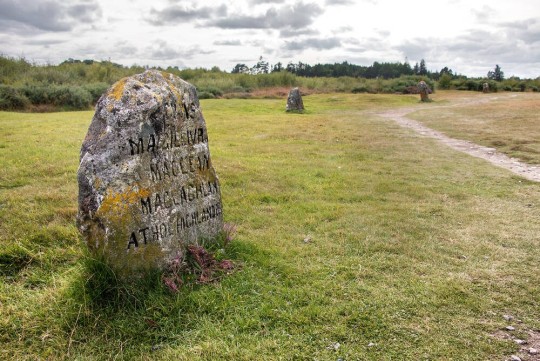
Stone cairns mark the mass graves where the various clans fell. Miraculously, Bonnie Prince Charlie escaped to the Outer Hebrides.
#Battle of Culloden#Inverness#Jacobites#Highland uprising#Bonnie Prince Charlie#Drummossie#Duke of Cumberland#UK#Scottish landscapes#mass graves#battlefields#16 April 1746
58 notes
·
View notes
Text

Culloden Memorial Photo by David Izatt
The Battle of Culloden was fought on Drumossie Moor, to the north east of Inverness, on April 16, 1746.
43 notes
·
View notes
Text

Artist: Francisco de Goya
(Fuendetodos, Spain, March 30, 1746 - April 16, 1828, Bordeaux, France)
Los Caprichos, 1st edition, plate 72, No te escaparás You will not escape), 1799
Etching and aquatint on paper
26 notes
·
View notes
Text
The Old Leanach Cottage, Culloden Battlefield.

Leanach Cottage was originally built in the early 18th century but has seen many changes since then. The traditional thatched cottage was lived in until 1912 but fell into disrepair shortly afterwards.
The cottage was later restored and served as the first visitor centre for people coming to see Culloden Battlefield. Now the cottage is a temporary exhibition space to discover more about Culloden’s heritage.
Thatching on the cottage is made from heather that was collected from the battlefield and then crafted together by local tradesmen, whilst the walls are a mixture of stone and turf.
On 16 April 1746, the final Jacobite Rising came to a brutal head. Jacobite supporters, seeking to restore the Stuart monarchy to the British thrones, gathered to fight the Duke of Cumberland's government troops. It was the last pitched battle on British soil and, in less than an hour, around 1,500 men were slain – more than 1,000 of them Jacobites.
22 notes
·
View notes
Text
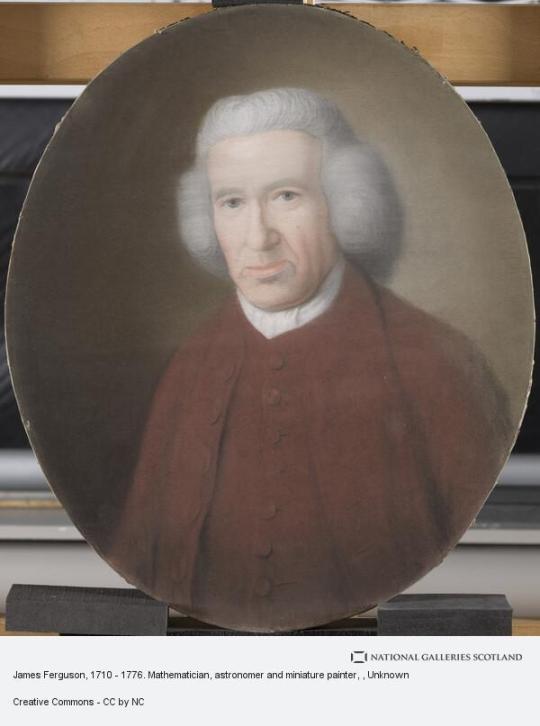
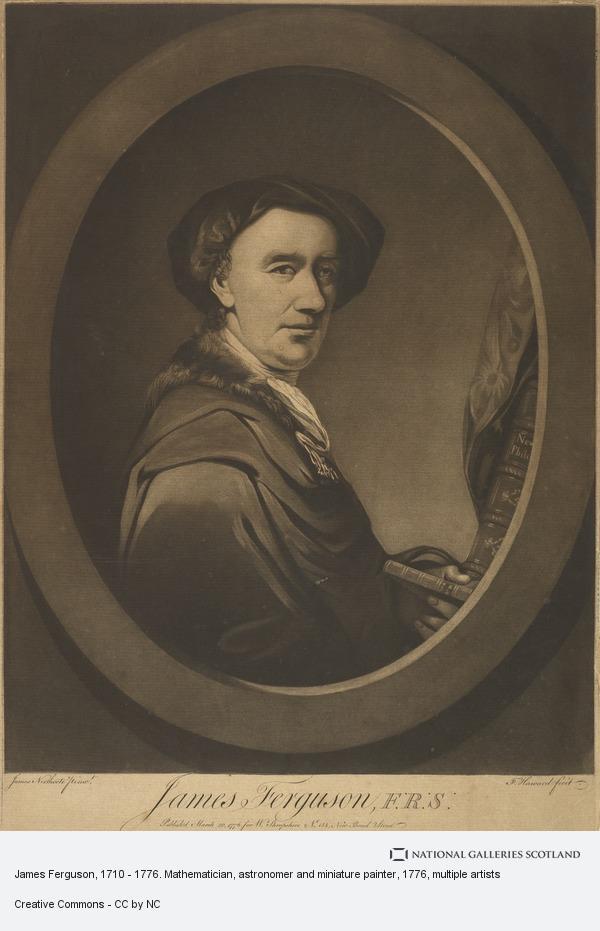
April 25th saw the birth in 1710 of James Ferguson in Core Of Mayen Rothiemay Huntly.
Ferguson was a bit of a polymath, basically a bit of an all rounder, he made his name in astronomy but he was also an instrument maker, lecturer, natural and experimental philosopher.
His father was a cottar and too poor to provide him with any formal education but nevertheless his aptitude for learning soon became apparent. At seven, he learned to read by listening to his father teach the catechism to his elder brother.
At ten, to earn his keep, he was sent to tend sheep for a neighbouring farmer, and what little spare time he then had was devoted to his developing interest in astronomy, making maps of the stars using beads and thread.
As a young man he first earned a living by cleaning clocks and repairing domestic machinery. In his spare time he constructed a wooden clock and watch with wooden wheels and whalebone springs. This mechanical talent would later assist in his construction of astronomical models. Showing artistic talent too, he made his way as a portrait painter in Edinburgh in 1734 and in Inverness in 1736. While in Inverness, Ferguson had returned to his earlier interest in the stars and prepared an astronomical table which was published in the 1740s, and in 1742 he constructed an orrery which is a clockwork model of the solar system.
In 1743 he was in London, again painting portraits but also continuing his astronomical research. Some papers were written, one of which - On the phenomena of Venus, represented in an orrery - was presented before the Royal Society in March 1746. In 1748, Ferguson began a career as a science teacher and lecturer, delivering courses on astronomy and a wide range of experimental science. In 1752-1753 he was lecturing on the reform of the calendar and the lunar eclipse of 1753. Although he had become very well known through his popularisation of science, he was far from well off, but by 1760 he was able to stop portrait-painting for a living.
In 1763 he presented to the Royal Society a projection of the partial solar eclipse of 1 April 1764 showing its times and phases at Greenwich. In 1767, back in Scotland, Ferguson introduced a lecture on electricity into his courses. His publications include Astronomy explained on Sir Isaac Newton’s principles, Lectures on select subjects in mechanics, hydrostatics, pneumatics, and optics, Introduction to electricity, Select mechanical exercises, and The art of drawing in perspective made easy to those who have no previous knowledge of the mathematics.
James Ferguson died in London on 16 November 1776.
8 notes
·
View notes
Text
Napoleon’s family - Birthday Calendar
Posting this on behalf of @northernmariette who went to the trouble to put this calendar together :
January
Elisa, 3 January 1777
Joseph, 7 January 1768
March
Napoléon II, 20 March 1822
Caroline, 25 March 1782
Charles (Carlo), 27 March 1746
April
Hortense, 10 April 1783
May
Lucien, 21 May 1775
June
Joséphine, 23 June 1763
August
Napoléon, 15 August 1769
Laetitia, 24 August 1750
September
Louis, 2 September 1778
Eugène, 3 September 1781
October
Pauline, 20 October 1780
November
Jérôme, 15 November 1784
December
Marie-Louise, 12 December 1791
-
On January 1, 1800, they were respectively:
if Charles had lived, hé would have been 53
Laetitia, 49
Joséphine, 36
Joseph, 31
Napoléon, 30
Lucien, 24
Elisa, 22
Louis, 21
Pauline, 19
Eugène, 18
Caroline, 17
Hortense, 16
Jérôme, 15
Marie-Louise, 8
Napoléon II, still an ovule.
26 notes
·
View notes
Text
Francisco José de Goya y Lucientes was also born #OTD (30 March 1746 – 16 April 1828). Here is one of his paintings on display at the Met with an interesting cast of animals:
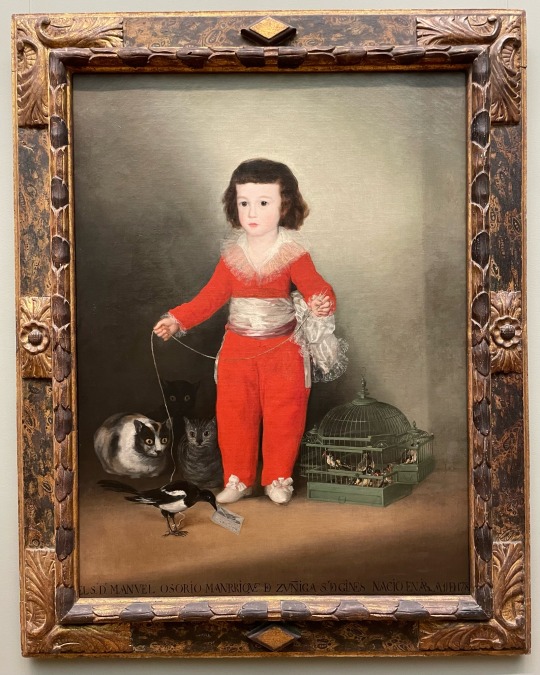

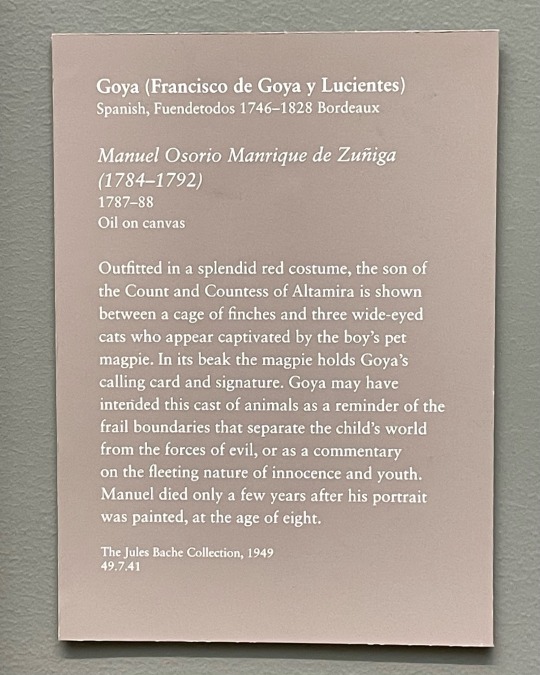
Goya (Francisco de Goya y Lucientes) (Spanish, 1746-1828)
Manuel Osorio Manrique de Zuñiga (1784-1792)
1787-8
oil on canvas
Metropolitan Museum of Art, New York
“Outfitted in a splendid red costume, the son of the Count and Countess of Altamira is shown between a cage of finches and three wide-eyed cats who appear captivated by the boy's pet magpie. In its beak the magpie holds Goya's calling card and signature. Goya may have intended this cast of animals as a reminder of the frail boundaries that separate the child's world from the forces of evil, or as a commentary on the fleeting nature of innocence and youth. Manuel died only a few years after his portrait was painted, at the age of eight.”
#bird#birds#birds in art#cat#cats#cats in art#magpie#finch#Goya#Francisco de Goya#18th century art#European art#Spanish art#Romanticism#portrait#painting#oil painting#child portrait#OTD#birthday post#museum visit#animals in art
30 notes
·
View notes
Text

Gif: @clairelizfraser
S01E15 Wentworth Prison • 16 May 2015 Transcript
Outlander Rewatch 2023 Countdown To Season 7
Favourite Word
Dinna be glaikit. The man’s away from his office for a full hour. — Rupert
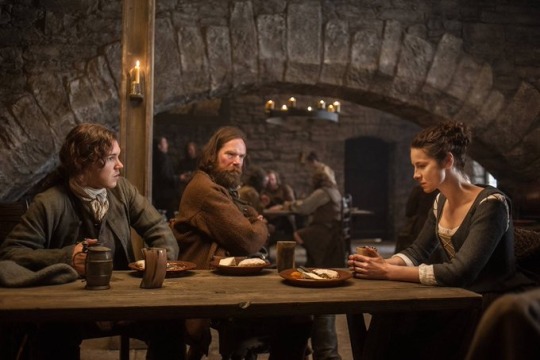
Photo: Starz
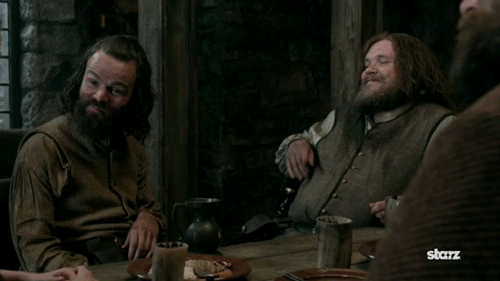
Gif: outlandercast
Favourite Line
And what the hell is so funny about 21 missing cattle? — Sir Marcus
I know how we can save young Jamie. — Murtagh
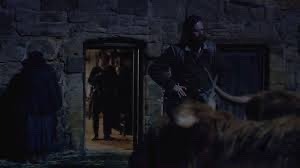

Screenshots: blacklanderz
Favourite Image
I gave these to Ellen MacKenzie, as a wedding gift. I've thought of them so often around her bonny neck. I wonder if she ever thought of me while wearing them. So, they're yours now. You wear them in good health. — Sir Marcus MacRannoch

Photo: Starz

Gif: @lois-lane

Photo edit: @thegirlwiththecoffintattoo
Remember… witch I am. And I curse you. I curse you with knowledge, Jack Randall. I give you the hour of your death. Jonathan Wolverton Randall. Born September 3rd, 1705. Dies... (whispered: April 16th, 1746) — Claire Fraser
15th of 75 • Monday, 17 April 2023
#Tait rhymes with hat#Good times#Outlander#Rewatch 2023#Countdown To Season 7#15th of 75#S01E15 Wentworth Prison#Aired 16 May 2015#Rewatched 17 April 2023
19 notes
·
View notes
Text
Who is the worst?
Round 1: Robert Livingston vs Aaron Burr

Robert Robert Livingston (November 27, 1746 (Old Style November 16) – February 26, 1813) was an American lawyer, politician, and diplomat from New York, as well as a Founding Father of the United States. He was known as "The Chancellor" after the high New York state legal office he held for 25 years. He was a member of the Committee of Five that drafted the Declaration of Independence, along with Thomas Jefferson, Benjamin Franklin, John Adams, and Roger Sherman. Livingston administered the oath of office to George Washington when he assumed the presidency April 30, 1789. Livingston was also elected as a member of the American Philosophical Society in 1801.
Livingston, a member of a large and prominent family, was known for continually quarreling with his relatives.
In 1789, Livingston joined the Jeffersonian Republicans (later known as the Democratic-Republicans), forming an uneasy alliance with his previous rival George Clinton and Aaron Burr, then a political newcomer. Livingston opposed the Jay Treaty and other initiatives of the Federalist Party, founded and led by his former colleagues Alexander Hamilton and John Jay. He ran for governor of New York as a Democratic-Republican, unsuccessfully challenging incumbent governor John Jay in the 1798 election.
Aaron Burr Jr. (February 6, 1756 – September 14, 1836) was an American politician and lawyer who served as the third vice president of the United States from 1801 to 1805. Burr's legacy is defined by his famous personal conflict with Alexander Hamilton that culminated with Burr killing Hamilton in a duel in 1804, while Burr was vice president.
Burr traveled west to the American frontier, seeking new economic and political opportunities. His secretive activities led to his 1807 arrest in Alabama on charges of treason. He was brought to trial more than once for what became known as the Burr conspiracy, an alleged plot to create an independent country led by Burr, but was acquitted each time. With large debts and few influential friends, Burr left the United States to live as an expatriate in Europe. He returned in 1812 and resumed practicing law in New York City. Burr's brief second marriage resulted in divorce and further scandal. Handicapped by a stroke and financially ruined, Burr died at a boarding house in 1836.
#worst founding father#founding fathers bracket#founding fathers#amrev#brackets#robert livingston#aaron burr
24 notes
·
View notes
Text
The Strength of a High and Noble Hill (Outlander Story) Timeline - 17th and 18th Centuries
Thought I would a timeline here as my timeline is a mix of my own stuff and the show/books. This will be getting updated as I go along. This is also for our own sanity to look back at. Advice is not to read if not up to date with current story as spoilers. Been split into two.
Masterlist
(19th and 20th Centuries)
23 December 1688 - James VII and II is deposed in the Glorious Revolution and is succeeded by his daughter Mary II as Queen of England, Scotland, and Ireland along with her husband and co-ruler King William III and II
March 1689 to February 1692 - First Jacobite rising
1691 - Brian Robert David Fraser is born (Lovat/Davina)
1695 - Ellen Catriona Sileas Mackenzie is born (Jacob/Anne)
8 March 1702 - Anne becomes Queen of England, Scotland, and Ireland then Queen of Great Britain and Ireland on 1 May 1707
1 August 1714 - Queen Anne I dies and is succeeded by George I, King of Great Britain and Ireland
September 1715 to February 1716 - Second Jacobite rising
1716 - Brian and Ellen marry and William Simon Murtagh Mackenzie Fraser is born (Brian/Ellen)
1719 - Janet (Jenny) Flora Arabella Fraser is born (Brian/Ellen)
5 June 1719 - Battle of Glen Shiel (third Jacobite attempt)
May 1720 - Ian Murray is born
1 May 1721 - James (Jamie) Alexander Malcolm Mackenzie Fraser is born (Brian/Ellen)
1726 - Laoghaire MacKenzie is born
1727 - King George I dies and his son succeeds him as George II, King of Great Britain and Ireland and Jamie’s brother William dies of smallpox
1729 - Lord John Grey is born and Ellen Fraser dies giving birth to Robert Brian Gordon Mackenzie Fraser (Brian/Ellen) who dies as well
1 May 1733 - Gillian Edgars/Geillis Duncan arrives through the stones from 1968
1735 - Fergus Claudel Fraser is born
1739 - Geneva Dunsany Ransom is born
October 1740 - Jamie is captured by Captain Jack Randall, Brian Fraser dies of a stroke and Jamie flees to France
1740 - Jenny marries Ian Murray
1741 - James (Young Jamie) Alexander Gordon Fraser Murray is born (Jenny/Ian)
2 May 1743 - Claire arrives through the stones at Craigh na Dun and meets Jamie who's returned to Scotland
June 1743 - Claire and Jamie get married
November 1743 - Margaret (Maggie) Ellen Fraser Murray is born (Jenny/Ian)
January 1744 - William Buccleigh Mackenzie is born (Dougal/Geillis)
February 1744 - Claire and Jamie leave for France
12 May 1744 - Brian Ian Fraser is born in Paris
August 1744 - Jamie returns from the Bastille
September 1744 - Arrive at Lallybroch
February 1745 - Katherine (Kitty) Mary Fraser Murray born (Jenny/Ian)
July 1745 - Battles begin (fourth and final Jacobite rising)
17 September 1745 - The Jacobites take Edinburgh
September 1745 - Lord John and Brian meet
21 September 1745 - Jacobite victory at Prestonpans
December 1745 - The Jacobites take Derby few hundred miles from London then retreat north
17 January 1746 - Last Jacobite victory at Falkirk
March 1746 - Mary Hawkins marries Jack Randall
16 April 1746 - The Culloden near Inverness defeat and Brian almost 2 sent to future through the stones at Craigh na Dun with Claire (2 months pregnant) and appear mid April 1948
1748 - Michael and Janet Fraser Murray born (Jenny/Ian)
December 1749 - Caitlin Fraser Murray born and died (Jenny/Ian)
1751 - Marsali Jane MacKimmie is born (Simon/Loaghaire)
15 November 1752 - Young Ian James Fitzgibbons Fraser Murray born (Jenny/Ian)
February 1753 - Fergus loses his hand to a British soldier
16 May 1753 - Jamie enters Ardsmuir Prison
1755 - Lizzie Wemyss born (Joseph)
1756 - Josiah Beardsley and Keziah Beardsley are born
September 1756 - Jamie arrives at Helwater
9 January 1758 - William (Willie) Clarence Henry George Ransom is born (Geneva/Jamie) and Geneva Dunsany Ransom dies
1760 - Rachel Hunter is born
25 October 1760 - King George II dies and his grandson succeeds him as George III, King of Great Britain and Ireland
26 April 1764 - William Tryon becomes Governor of North Carolina
July 1764 - Jamie leaves Helwater
Early 1765 - Jamie marries Laoghaire but soon moves to Edinburgh
1766 - Rollo is born
November 1766 - Claire comes through stones at Craigh na Dun from 1968 leading to Jamie’s annulment to Laoghaire
Spring 1767 - Fergus and Marsali marry
September 1767 - Jamie and Claire settling on newly established Fraser's Ridge
December 1767 - Germain Alexander Claudel Mackenzie Fraser is born (Fergus/Marsali)
May 1769 - Brian and Ellen come through the stones at Craigh na Dun
June 1769 - Meet the Murray's
July 1769 - Brian and Ellen meet Lizzie Wemyss and travel to the US
September 1769 - Meet with Roger in US, Bonnet’s attack then find reunite with family
November 1769 - It’s revealed Ellen is pregnant and Roger is sold to the Mohawks
December 1769 - Move to River Run as Claire, Jamie and Ian look for Roger
5 March 1770 - Boston Massacre
March 1770 - Re-meet Lord John
April 1770 - Fergus and Marsali arrive at River Run on their way to Frasers’ Ridge
May 1770 - Claire and Jamie return (Ian has been adopted by Kanyen’kehaka) and Jeremiah (Jem or Jemmy) Alexander Ian Fraser MacKenzie is born (Ellen/Roger)
June 1770 - Roger returns to Fraser’s Ridge
September 1770 - Joan Laoghaire Claire Fraser is born (Fergus/Marsali) and Hillsborough Riot
October 1770 - Ellen and Roger's wedding, the Gathering at Mount Helicon and Lord John comes with news of Bonnet then Fiery Cross and Brian meets Brynmor
December 1770 - Building a Militia to hunt regulators (Beardsley's and Brownsville) then orders to dismantle then Lieutenant Knox’s death
March 1771 - Jocasta's wedding to Duncan Innes at River Run
2 notes
·
View notes
Text
Snarry Fairy Tale AU Rec List [ 3 ]
So I have decided to split the rec list into multiple parts so it easier to navigate (at least that was the idea). The list will naturally grew as I read and find more and more Fairytale AU fics. So keep an eye fairytale lovers! There might be a new rec list waiting on the corner 👀
✧⋄⋆⋅⋆⋄✧⋄⋆⋅⋆⋄✧✧⋄⋆⋅⋆⋄✧⋄⋆⋅⋆⋄✧
👑 The Crown Prince & the Dark Mage 🔮 by greywitchy
Rating: General Audiences || Words: 40,326
Summary:
👑 On his quest to save the kidnapped fair Princess Ginevra, the definitely straight Crown Prince Harry runs into more trouble than he’s bargained for.
🔮 The dark wizard from the Forbidden forest refuses to be called trouble but solely returns the sentiment. And would very much be left to brood alone, thank you very much, not cater for his uninvited guest who just won’t leave…
✧⋄⋆⋅⋆⋄✧⋄⋆⋅⋆⋄✧✧⋄⋆⋅⋆⋄✧⋄⋆⋅⋆⋄✧
The Boy by themoonandstars1989
Rating: Explicit || Words: 2,492 ||TW: Rape/Non-con Elements, Non-Consensual Somnophilia
Summary:
The boy had grown beautiful — alabaster skin and dark red lips. Snow White personified, waiting for a prince's kiss to wake him up.
Or was it Sleeping Beauty?
Severus paid no mind to his mum's ramblings. He did not waste his childhood on fairy tales and wishes.
Maybe he should have.
✧⋄⋆⋅⋆⋄✧⋄⋆⋅⋆⋄✧✧⋄⋆⋅⋆⋄✧⋄⋆⋅⋆⋄✧
Just Like a Fairy Story by lyraonyx
Rating: Explicit || Words: 11,094
Summary:
After ten years of trying to live without Severus, Harry is forced to return to him for the sake of his friends. Hermione is dying, and Severus is her last hope. Severus offers him a deal, fearful it will tear them apart forever, but Harry has a solution that gives everyone a happy ending.
Based on the snippet floating about the net of a fae asking for a woman's firstborn in return for her mother's life and being very, very surprised by her interpretation of his demands.
✧⋄⋆⋅⋆⋄✧⋄⋆⋅⋆⋄✧✧⋄⋆⋅⋆⋄✧⋄⋆⋅⋆⋄✧
Fairest creatures by Anakletos
Rating: Mature || Words: 52,156
Summary:
Prompt #107: Harry lives a simple and contented life until he gets to know Severus, the lonely man who sits on the park bench at the same time every day. All Harry wants then is to become a part of his life. There’s just one little problem…
✧⋄⋆⋅⋆⋄✧⋄⋆⋅⋆⋄✧✧⋄⋆⋅⋆⋄✧⋄⋆⋅⋆⋄✧
A Strange Fate by LilaDiurne
Rating: Mature || Words: 4,306
Summary:
Based on the myth of Pygmalion. Severus is a brilliant but lonely sculptor who falls in love with the beautiful marble statue of a young man he has been working on diligently for years.
✧⋄⋆⋅⋆⋄✧⋄⋆⋅⋆⋄✧✧⋄⋆⋅⋆⋄✧⋄⋆⋅⋆⋄✧
Wizards Are Like Onions by Taxonomic
Rating: Teen And Up Audiences || Words: 3,263
Summary:
You can blame discord for this one.
Shrek AU. 'Nuff said.
✧⋄⋆⋅⋆⋄✧⋄⋆⋅⋆⋄✧✧⋄⋆⋅⋆⋄✧⋄⋆⋅⋆⋄✧
The Detective's Ballet by pluperfectsunrise
Rating: Explicit || Words: 18,151
Summary:
Harry Potter’s two best friends have been kidnapped by a man called the Snow King. He sets out on a dangerous quest to get them back.
Meanwhile, another Harry Potter goes to the ballet in search of Severus Snape.
✧⋄⋆⋅⋆⋄✧⋄⋆⋅⋆⋄✧✧⋄⋆⋅⋆⋄✧⋄⋆⋅⋆⋄✧
a forest, dark and deep by bleedcolor
Rating: Mature || Words: 18,809
Summary:
Once, many years ago (for that is when all great stories begin, many years ago; we never consider we might be in the midst of our own great story) there lived a boy. But wait, you might say, there is nothing special about a boy living, many people do and never amount to much of anything. You would be right, but you would also be wrong, because this story is not about a boy who lived, but The Boy Who Lived, and that is all the difference.
✧⋄⋆⋅⋆⋄✧⋄⋆⋅⋆⋄✧✧⋄⋆⋅⋆⋄✧⋄⋆⋅⋆⋄✧
The Worn-Out Dancing Shoes by originella
Rating: Mature || Words: 18,809
Summary:
April 16, 1746 - The Battle of Culloden is not merely limited to the Muggle World, and the Scottish wizards fight for independence, but are unsuccessful. There are many casualties, leaving several young witches and wizards without mothers and fathers.
September 1, 1746 - Hogwarts Castle is again opened for young witches and wizards to learn how to be proper within the Wizarding World, with many tutors on hand to educate them in history, Transfiguration, charms, Defense Against the Dark Arts, Herbology, and potions. Albus Dumbledore soon announces a Christmas ball, and all is well.
December 1, 1749 - Dumbledore bans Christmas balls from Hogwarts castle, because he is tired of wasting Galleons on dancing shoes.
December 12, 1749 - Harry, Ron, and Draco devise a plan to still have Christmas balls, which is where our story begins...
✧⋄⋆⋅⋆⋄✧⋄⋆⋅⋆⋄✧✧⋄⋆⋅⋆⋄✧⋄⋆⋅⋆⋄✧
The Prince Within by OhHamilton
Rating: Mature || Words: 25,486
Summary:
Heavily influenced by the retelling of Beauty and the Beast by Serena Valentino.
This is the story of a Prince and of his descent into madness, into becoming the monster that was hiding within. What if Severus Snape was the beast and three witches cursed him so that his outside reflected the ugliness within? Could Harry, our very own Beau, see the man within the beast?
✧⋄⋆⋅⋆⋄✧⋄⋆⋅⋆⋄✧✧⋄⋆⋅⋆⋄✧⋄⋆⋅⋆⋄✧
[≪ Previous] [Next ≫]
#rec list#snarry#severusxharry#harry x snape#snape x harry#harry x severus#harry potter#severus snape
4 notes
·
View notes
Text
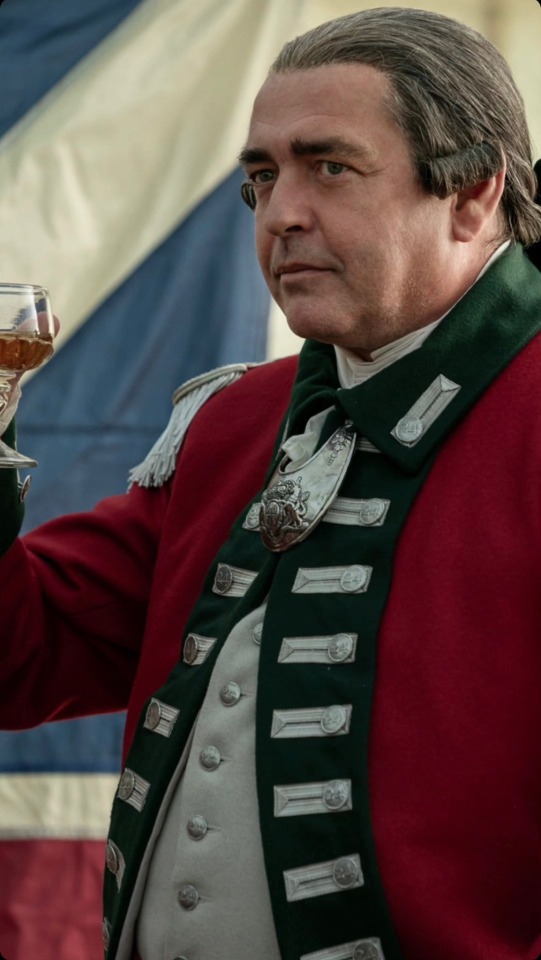
Who is General Simon Fraser on 'Outlander' Season 7?
General Simon Fraser is a character in Outlander seven season, portrayed by Angus Macfadyen, Scottish actor who was born in Glasgow. Educated in France, fluent in French.International Baccalaureate, Copenhagen. MA (Hons) in French and English, University of Edinburgh. He attended Central School of Speech and Drama in London.
Angus MacFadyen is a wonderful actor, it's a pity he's only got a small part, but showed he was perfect portraying General Simon Fraser, Angus played it to perfection.

Through coincidence he played Robert the Bruce in the film with the same title, where Angus not only reprised his role as the Bruce, he also co-wrote the film's screenplay, and in Braveheart, he narrated and played the Scottish noble.
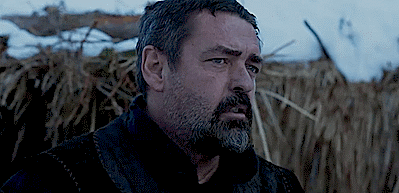
Simon Fraser of Balnain, played by Angus Macfadyen is not the same Simon Fraser, Lord Lovat “The Old Fox” (Clive Russell), or his son Simon (James Parris) in Outlander Season 2.

Simon Fraser of Balnain
Simon Fraser of Balnain, from Invernesshire, Scotland, was born to a fighting culture. A Scottish Highlander, he was ushered into a rich heritage of Scottish warriors. The Fraser family of Balnain had supported Bonnie Prince Charles and, like many Highland families, suffered heavily after the Jacobite defeat at Culloden in 1746. After that conclusive battle, many of Prince Charles supporters were dealt with severely; several were executed and countless had their houses destroyed and their estates confiscated.

Battle of Culloden April 16, 1746

For decades prior to and even after the Jacobite Rebellion, the British had Scottish regiments within its ranks, such as the 64th Highlanders. Many Scots also sought mercenary service with the Dutch by enlisting in Holland’s Scottish Brigades. At age 18, in 1747, Simon did so, entering the newly formed Fourth Scottish Brigade under the Earl of Drumlanrig. He soon found himself embroiled in the final years of the Austrian War of Succession (1740-1748).

In an ironic twist, Highlander Simon Fraser (among the Dutch Scottish Brigade) fought alongside those who just the previous year, had killed many of his countrymen and destroyed and pillaged his family’s estates; these were Loudoun’s Highlanders, the 64th Highlander Regiment. During the Jacobite Rebellion, the 64th had remained loyal to the British army and fought against their fellow highlanders at the Culloden Battle. They now were employed by England in support of the Dutch.
In 1756, Fraser ended his pension service with the Dutch and joined the British army, enlisting in the 62nd Royal American Regiment of Foot. The 62nd Regiment of Foot, renumbered the 60th in February 1757, was better known under its later name, The King’s Royal Rifle Corps. The Seven Years War, also known as the French and Indian War, necessitated new battle tactics for British forces in America.
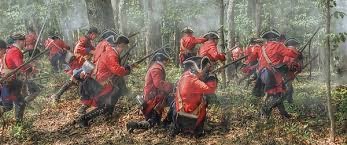
Royal American Regiment of Foot, Kings Rifle Corps
The Scottish name of Simon Fraser was quite common because of the frequent use of the name Simon Fraser in military lists, there has been much confusion and misinformation. The 63rd Highlanders, later the 78th Highland Regiment of Foot, was commanded by Simon Fraser’s cousin, Lt. Colonel Simon Fraser, who was the 19th Chief of the Clan Fraser of Lovat. Lovat’s father, the 11th Chief of the Clan Fraser of Lovat, who also named Simon Fraser, was a Jacobite and subsequently executed after Culloden. King George II reinstated the lands of Lord Lovat to Colonel Simon Fraser in 1757 with the understanding he would raise a regiment of Highlanders which were labeled ‘Fraser’s Highlanders’.
The 78th Highlanders not only had a Lt. Colonel Simon Fraser as its commanding officer, but so too a captain, a lieutenant, and an ensign. The younger Simon Fraser was known as Lieutenant Simon Fraser Junior, being the youngest subaltern by that name and was listed in the regiment’s 1757 return as Ensign Simon Fraser.
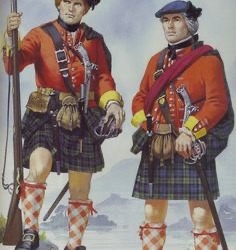
Fraser’s (Lord Lovat) 78th Highlanders
Simon Fraser of Balnain, a character in Outlander 7 season, is the historical figure who would serve in the American Revolution under British Lieutenant General John Burgoyne's command.
By 1768, he had risen to Lieutenant Colonel of the 24th Regiment of Foot. Along with his regiment, Fraser was sent to Quebec in 1776.
Not long after his service at Quebec, Simon Fraser was promoted to Brigadier General, and Fraser's command was in the vanguard during the taking of Fort Ticonderoga. This meant that he was responsible not only for his 24th Regiment of Foot but also for the Grenadier battalion, the light infantry battalion, a company of marksmen, as well as members of the Canadian militia and Native American soldiers, and Fraser helped dislodge the retreating Americans.
When General John Burgoyne organised his Saratoga campaign in the autumn of 1777, Fraser was chosen to command the advanced unit. He saw many successes in battle, but his fatal day on the battlefield came on October 7th, 1777 when he was hit with rifle fire at Second Saratoga, or the Battle of Bemis Heights.
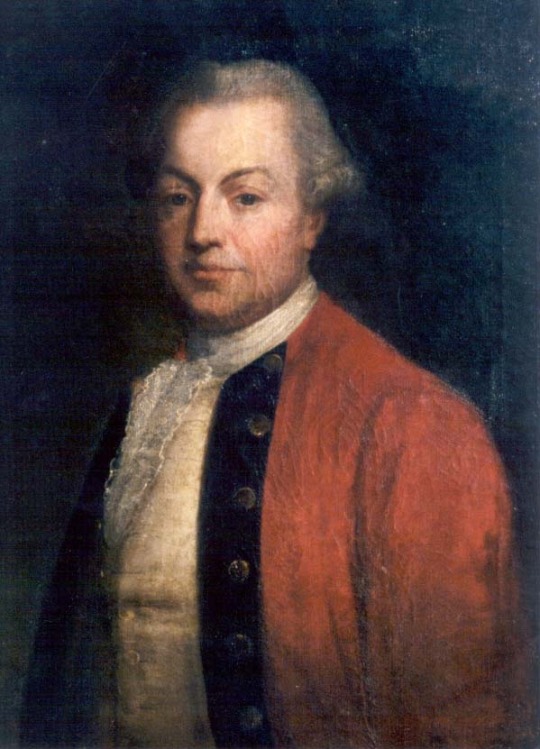
General Simon Fraser of Balnain
#SimonFraserofBalnain #AngusMacfadyen #FortTiconderoga #AmericanRevolution #HighlandRegiments #BritishArmy #outlander
3 notes
·
View notes
Text

Francisco Goya (30 March 1746 – 16 April 1828)
Grande hazaña! Con muertos!
.."the fettered hands at the ends of arms reaching from nothing toward nowhere.."
1 note
·
View note
Text




John Rattray, the Scottish Jacobite Surgeon and golfer was born on September 22nd 1707, Craighall Castle, Rattray, Perthshire.
John’s father was an Episcopalian priest who became the Bishop of Dunkeld, then of Brechin and was elected Primus of the Scottish Episcopal Church. On his death in 1743 his elder son James became clan chief and inherited the estate. As the second son John had no such inheritance and he trained as a surgeon in Edinburgh by apprenticeship to the surgeon John Semple between 1728 and 1735, when he began surgical practice in Edinburgh. To enhance his professional status he applied to become a freeman (or fellow) of the Incorporation of Surgeons of Edinburgh (later the Royal College of Surgeons of Edinburgh) This involved sitting a series of four examinations which were held in the later months of 1740, and, having passed these, he was admitted a freeman of the Incorporation in November 1740.
In his spare time John Rattray was a keen sportsman he joined , The Royal Company of Archers in 1731 winning the archery competition for the silver punch bowl on 4 occasions and The Company’s most prestigious prize, the Edinburgh Arrow, twice. He was also a skilled golfer and his prowess at golf is recorded in this extract from the mock heroic poem ‘The Goff’ by Rev. Thomas Mathison published in 1743, the first poem devoted to the sport of golf.
North from Edina eight furlongs and more,
Lies that fam’d field, on Fortha’s sounding shore.
Here Caledonian Chiefs for health resort,
Confirm their sinews by the manly sport.
Macdonald and unmatch’d Dalrymple ply
Their pond'rous weapons, and the green defy;
Rattray for skill, and Corse for strength renown’d,
Stewart and Lesly beat the sandy ground,
And Brown and Alston, Chiefs well known to fame,
And numbers more the Muse forbears to name.
Gigantic Biggar here full oft is seen,
Like huge behemoth on an Indian green;
His bulk enormous scarce can 'scape the eyes,
Amaz’d spectators wonder how he plies.
Yea, here great Forbes, patron of the just,
The dread of villains and the good man’s trust,
When spent with toils in serving human kind,
His body recreates, and unbends his mind.
John Rattray was one of the men who drew up the first ever Rules of Golf and on March 7th, 1744, the City of Edinburgh Council provided the Gentlemen Golfers at Leith (now the Honourable Company of Edinburgh Golfers at Muirfield) with a Silver Club on condition they draw up regulations for their competition and rules ‘for the goff’.The following month Rattray won the first ever competition for the Silver Club, was duly appointed ‘Captain of the Goff’ and became the sole signatory of the first known written ‘Rules of Golf’.
18 months later the Jacobites entered Edinburgh and Rattray’s older brother James, the Laird of Craighall, suggested he offer his medical services to Bonnie Prince Charlie, I say suggested, as Clan Chief he chose which side to be on for family members.
Please note not all followed their Clan Chief, this split many families down the middle, you had brothers taking different sides during th ‘45 Uprising.
As the Jacobites mobilised ahead of Prestonpans, Rattray, who lived at South Foulis Close off the High Street, rode to the East Lothian encampment along with John Lauder, a fellow of the Incorporation of Surgeons,according to their records he tended the wounded and travelled as surgeon with the army as it advanced into England and then retreated from Derby, eventually becoming surgeon general and personal surgeon to Prince Charles.
Records also show Rattray and Lauder were captured on the battlefield at Culloden on April 16 1746. The pair were held in a church in Inverness and their medical instruments removed, according to accounts. They were moved to Inverness Prison three days later.
Their detention, however, was short lived after Lord President Forbes sought a direct reprieve for Rattray and Lauder from the Duke of Cumberland, Forbes, the same Forbes mentioned in the poem, and a friend of the surgeon.
Following his release, Rattray headed to Culloden House, the family home of his golfing companion.
One account of his release in The Lyon in Mourning, a collection of papers, letters and speeches of Jacobite supporters of the ‘45 Uprising, said: “Mr John Rattray came to Culloden House after his liberation at Inverness. President Forbes told the said Mr Rattray that he had obtained his liberation upon condition that he should become evidence.”
John Rattray was horrified by the prospect of becoming a witness for the state, according to the account.
It added: “This provoked Mr Rattray so much that he told the President in a passion that he would far choose to give himself up in a second and to return to the miserable situation of a prisoner once more than to become an evidence.”
Lord President Forbes convinced him not to surrender with the law man sure he was able to spare the surgeon. The medics returned to Edinburgh and Rattray confided in a friend about Lord Presidents’ offer.
It is said the Lord President, who died the following year, was so taken aback at Rattray sharing details of the proposal that “it had bad effects upon the President’s health, and even hastened his death.
“It is indeed a prevailing opinion that the President died of a broken heart,” the account said.
Rattray was quickly seized in the capital and was again taken prisoner on 28 May 1746 before being sent to London, by Cumberland’s orders, to act as a witness.
He was finally released on January 7 1747 and eventually returned to his usual routine of work and sport.
In 1751, he won the Silver Club for the third time. Today, you can visit a statue of John Rattray on Leith Links, close to the first hole of the original course that was played 276 years ago. He died in Edinburgh on 5th July 1771.
31 notes
·
View notes
Text
Culloden Battlefield - where the Jacobites uprising failed to take over Scotland on April 16, 1746.







0 notes
Link
Events from History: 16 April 1746 The Last Stand: The Battle of Culloden On April 16, 1746, the Battle of Culloden marked a definitive and sorrowful end to the Jacobite Rising of 1745, a campaign to restore the Stuart monarchy to the British throne. The battle fought on Culloden https://5minutehistory.com/military/events-from-history-16-april-1746/
0 notes